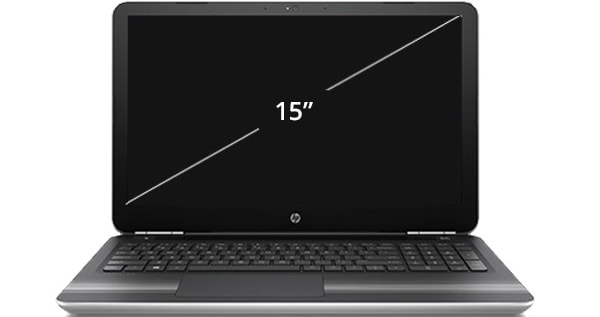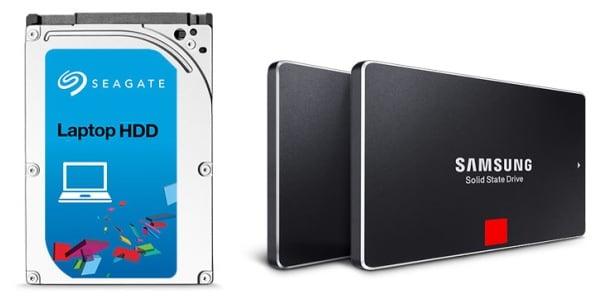A high-end CPU and ample RAM for faster processing
Using a poor performing laptop can be painful, especially when you’re working on heavy graphic software. Take for example, 3D modelling or CAD.  You will need to render huge models and scenes, which take an incredible amount of time. Having a good processor and ample RAM is paramount. For beginners, at least consider an Intel Core i5 processor from one of the latest generations. As far as rendering goes, having more cores on a processor helps. Some of the entry-level Core i5 models may only have 2 cores, so keep a close eye out on that.If you have the option of choosing a laptop running AMD processors, then look at the A8 or A10 series. As far as RAM goes, 8GB should be sufficient but having the option to upgrade is always a good idea. RAM is relatively cheap, and you can upgrade it later, when you feel the need. If you’re a professional, you can choose between the Intel Core i7 and AMD’s FX series of processors. AMD also has an A12 line of processors, but that might be hard to find. Look for laptops with 16GB of RAM if possible. Again, memory expansion is an important point. If you’re considering a MacBook Pro, the more affordable options with the 15-inch screen, use Intel’s Core i5 series of processors. If budget is no constraint, the 17-inch models run Intel’s Core i7 quad-core processors.
You will need to render huge models and scenes, which take an incredible amount of time. Having a good processor and ample RAM is paramount. For beginners, at least consider an Intel Core i5 processor from one of the latest generations. As far as rendering goes, having more cores on a processor helps. Some of the entry-level Core i5 models may only have 2 cores, so keep a close eye out on that.If you have the option of choosing a laptop running AMD processors, then look at the A8 or A10 series. As far as RAM goes, 8GB should be sufficient but having the option to upgrade is always a good idea. RAM is relatively cheap, and you can upgrade it later, when you feel the need. If you’re a professional, you can choose between the Intel Core i7 and AMD’s FX series of processors. AMD also has an A12 line of processors, but that might be hard to find. Look for laptops with 16GB of RAM if possible. Again, memory expansion is an important point. If you’re considering a MacBook Pro, the more affordable options with the 15-inch screen, use Intel’s Core i5 series of processors. If budget is no constraint, the 17-inch models run Intel’s Core i7 quad-core processors.
Graphics card for working on detailed scenes and heavy texturing
 Many of us assume that graphics cards are only for gaming, but graphics cards are essential to any laptop that’s going to be used by a designer. Almost all the popular packages today make good use of it. If you are into 2D designing and painting, the software run smoother, and are able to handle complex projects with the help of a graphics cards. Having a mid-end graphics card is recommended. Something on the lines of the NVIDIA GeForce GTX1050 or AMD’s Radeon R7 is worthwhile. It also helps future-proof your laptop, so you don’t need to keep upgrading it every year or two.3D modelling software absolutely need a graphics card though. Projects commonly contain detailed wire-mesh and massive textures which integrated graphics solutions struggle to handle. All of this rendered well, on a good graphics card. For this, more powerful hardware is needed. Look at NVIDIA’s latest 10 series of GeForce GPUs such as the GTX 1060, GTX 1070 or the GTX 1080 ideally. Opt for the R9 series of Radeon GPUs if you’re looking at something from AMD.
Many of us assume that graphics cards are only for gaming, but graphics cards are essential to any laptop that’s going to be used by a designer. Almost all the popular packages today make good use of it. If you are into 2D designing and painting, the software run smoother, and are able to handle complex projects with the help of a graphics cards. Having a mid-end graphics card is recommended. Something on the lines of the NVIDIA GeForce GTX1050 or AMD’s Radeon R7 is worthwhile. It also helps future-proof your laptop, so you don’t need to keep upgrading it every year or two.3D modelling software absolutely need a graphics card though. Projects commonly contain detailed wire-mesh and massive textures which integrated graphics solutions struggle to handle. All of this rendered well, on a good graphics card. For this, more powerful hardware is needed. Look at NVIDIA’s latest 10 series of GeForce GPUs such as the GTX 1060, GTX 1070 or the GTX 1080 ideally. Opt for the R9 series of Radeon GPUs if you’re looking at something from AMD.
Display and screen size for easier working
 It is difficult to use CG software on a small screen, purely because these software contain a ton of menus, tools and color palettes surrounding the tiny workspace. The screen resolution, not the screen size is a bottleneck. The general thumb rule for any laptop meant for designers is - higher the resolution, the better. Most laptop screens run a resolution of 1366x768, which is good enough for web browsing, but certainly not for any serious designing tool. Look for laptops with screens that run a resolution of 1600x900, or 1920x1080. Screen size shouldn’t be ignored, and a resolution of 15 inches or higher is what we recommend. If you need more workspace and screen area, think about purchasing an external monitor or connecting your laptop to a 4K TV or monitor. This will be useful when you’re working at home. This is a test line, meant to increase the length of the paragraph. To be deleted when completed. This is a test line, meant to increase the length of the paragraph. To be deleted when completed.
It is difficult to use CG software on a small screen, purely because these software contain a ton of menus, tools and color palettes surrounding the tiny workspace. The screen resolution, not the screen size is a bottleneck. The general thumb rule for any laptop meant for designers is - higher the resolution, the better. Most laptop screens run a resolution of 1366x768, which is good enough for web browsing, but certainly not for any serious designing tool. Look for laptops with screens that run a resolution of 1600x900, or 1920x1080. Screen size shouldn’t be ignored, and a resolution of 15 inches or higher is what we recommend. If you need more workspace and screen area, think about purchasing an external monitor or connecting your laptop to a 4K TV or monitor. This will be useful when you’re working at home. This is a test line, meant to increase the length of the paragraph. To be deleted when completed. This is a test line, meant to increase the length of the paragraph. To be deleted when completed.
Large capacity storage to store massive projects
 Laptops usually come built with two types of storage - hard disk drives (HDD) and solid state drives (SSD). Hard drives are more affordable, but slower than solid state drives. SSDs are way more expensive and come in limited sizes. If you’re working on massive 3D and video editing projects, look at the capacity first. Most laptops come with 500GB or 1TB hard drives. Choosing a laptop with 1TB HDD should be enough for installing all the designing software and storing projects. The advantage of using an SSD is its speed which means rendering and loading of projects happens in seconds.
Laptops usually come built with two types of storage - hard disk drives (HDD) and solid state drives (SSD). Hard drives are more affordable, but slower than solid state drives. SSDs are way more expensive and come in limited sizes. If you’re working on massive 3D and video editing projects, look at the capacity first. Most laptops come with 500GB or 1TB hard drives. Choosing a laptop with 1TB HDD should be enough for installing all the designing software and storing projects. The advantage of using an SSD is its speed which means rendering and loading of projects happens in seconds.



